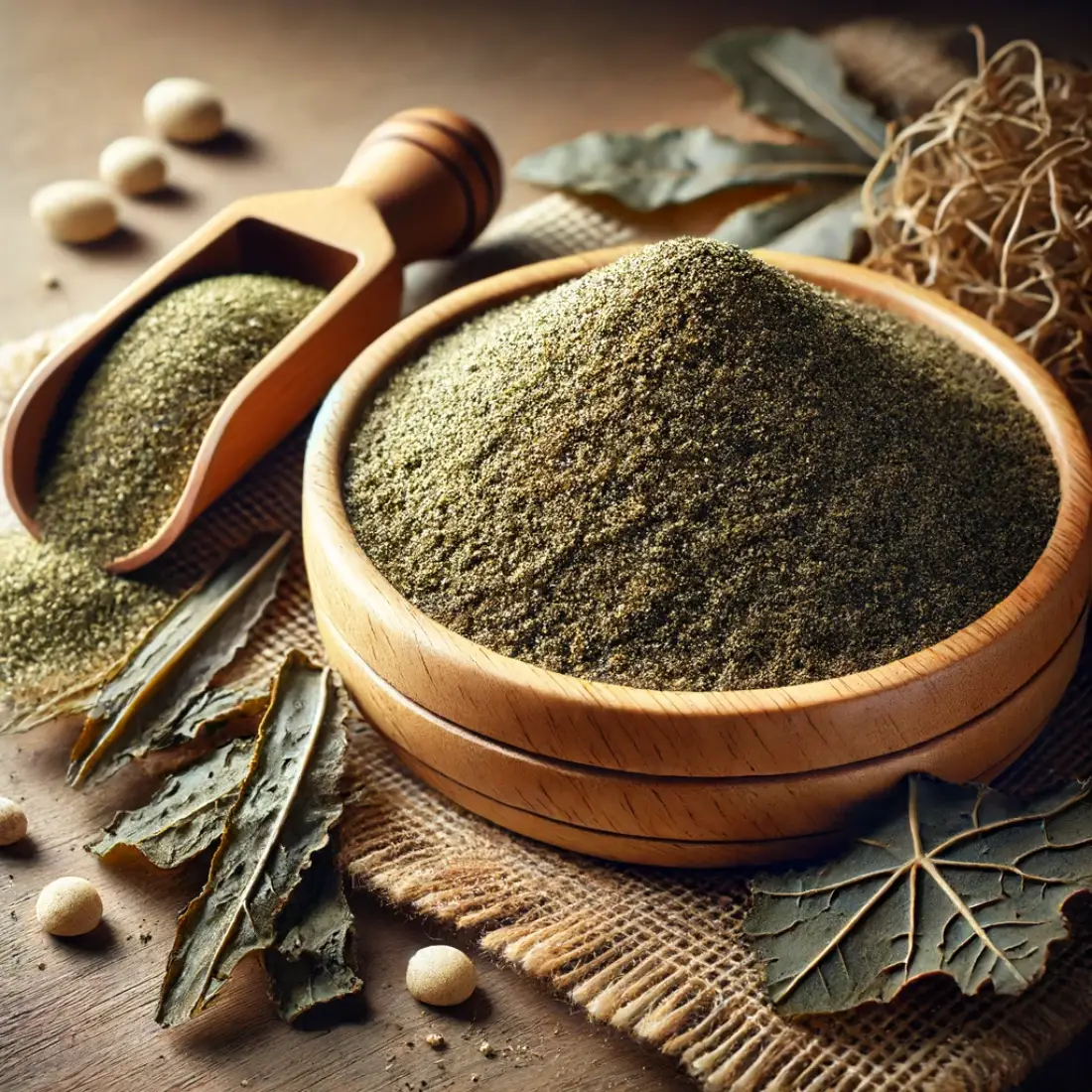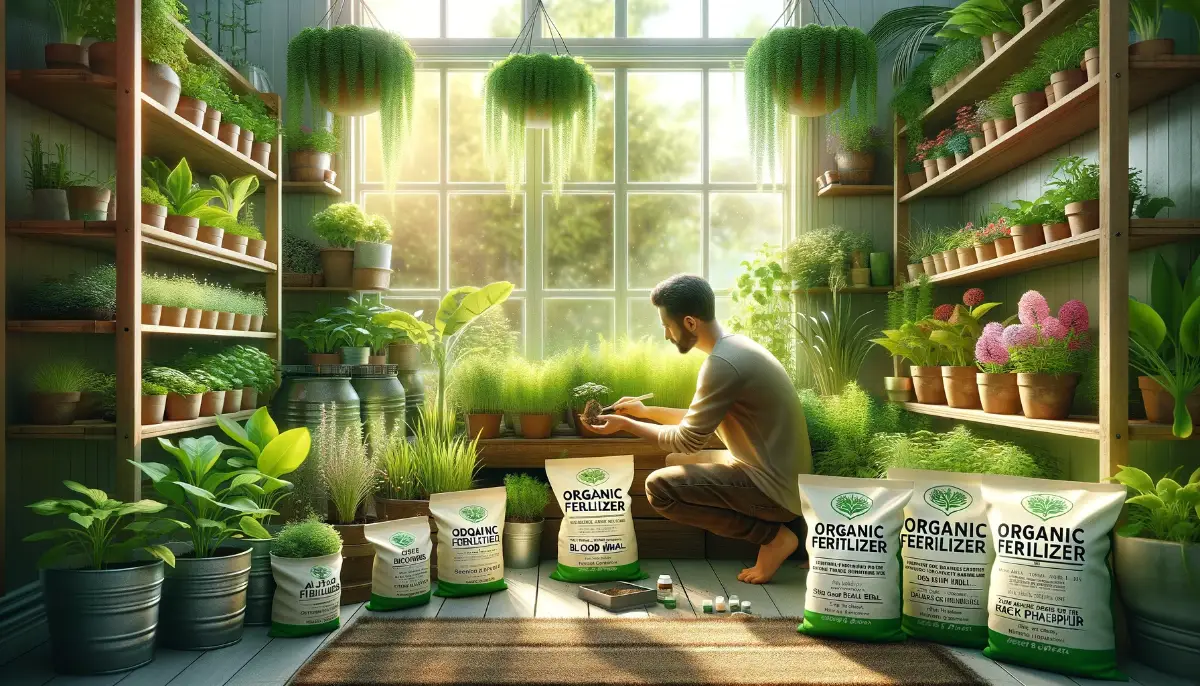Kelp meal is an organic fertilizer derived from dried and ground seaweed, specifically kelp. Kelp is a type of large brown algae found in coastal waters around the world, particularly in nutrient-rich, cold-water environments. Kelp meal is produced by harvesting the kelp, drying it, and then grinding it into a fine powder or granules, making it easy to apply to soils and plants.
- Nutrient-Rich: Kelp meal is loaded with essential minerals, vitamins, and growth hormones that support plant health.
- Soil Improvement: It enhances soil structure, water retention, and promotes beneficial microbial activity.
- Plant Health: Stimulates root development, boosts disease resistance, and increases crop yield and quality.
- Environmentally Friendly: Sustainable and renewable, kelp meal is an eco-friendly alternative to synthetic fertilizers.
- Versatile Application: Can be used as a soil amendment, in compost, or as a liquid fertilizer.
- Effective Practices: Best applied at specific times and tailored to particular plants for optimal results.
- Unique Benefits: Offers distinct advantages over other organic fertilizers like fish emulsion and bone meal.
How to Use Kelp Meal as a Fertilizer
Application Methods
Soil Amendment
- Mixing into the Soil: Work kelp meal into the top few inches of soil before planting. For gardens, use about 1-2 pounds per 100 square feet.
- Recommended Quantities: For potted plants, mix about 1-2 tablespoons per gallon of soil. For established plants, sprinkle a small amount around the base and gently work it into the soil.
Composting
- Enhancing Compost Quality: Add kelp meal to your compost pile to boost its nutrient content. This will help speed up decomposition and improve the overall quality of the compost.
- Suggested Ratios: Use approximately 1 cup of kelp meal per cubic yard of compost material.
Liquid Fertilizer
- Making Kelp Meal Tea: Soak 1-2 cups of kelp meal in a 5-gallon bucket of water for 24-48 hours. Stir occasionally.
- Foliar Spray Application: Strain the liquid and use it as a foliar spray or soil drench. Apply it to the leaves and base of plants every 2-4 weeks during the growing season.
Best Practices
Timing of Application
- Seasonal Considerations: Apply kelp meal in early spring to prepare the soil for planting and again in late summer or early fall to help plants recover after the growing season.
- Growth Stages of Plants: Use kelp meal during critical growth stages, such as seedling establishment, flowering, and fruiting, to maximize its benefits.
Specific Plant Recommendations
- Vegetables: Apply kelp meal at planting time and as a side-dress during the growing season to boost growth and yields.
- Flowers: Use kelp meal to promote vibrant blooms and healthy foliage. Apply it at planting and as a top-dress during the growing season.
- Trees and Shrubs: Spread kelp meal around the base of trees and shrubs in early spring and late fall to support root development and overall health.
Plants That Benefit the Most from Kelp Meal
Vegetables
- Tomatoes: Enhanced growth, increased yield, and improved resistance to diseases.
- Leafy Greens (Lettuce, Spinach, Kale): Faster growth, more robust leaves, and better overall health.
- Root Vegetables (Carrots, Beets, Radishes): Improved root development and increased size.
Flowers
- Roses: More vibrant blooms, stronger stems, and improved resistance to pests and diseases.
- Perennials (Peonies, Daylilies): Enhanced flowering and overall vigor.
- Annuals (Marigolds, Petunias): Increased bloom production and healthier foliage.
Fruits
- Strawberries: Larger fruit size, improved flavor, and increased yield.
- Citrus Trees (Oranges, Lemons): Enhanced fruit quality and better resistance to environmental stresses.
- Berry Bushes (Blueberries, Raspberries): Increased fruit production and healthier bushes.
Herbs
- Basil: Faster growth, more robust leaves, and improved flavor.
- Mint: Enhanced growth and increased resistance to pests.
- Parsley: Improved leaf production and overall plant health.
Trees and Shrubs
- Fruit Trees (Apple, Pear): Better fruit set, improved fruit quality, and increased resistance to diseases.
- Evergreens (Pine, Spruce): Enhanced growth, greener needles, and better overall health.
- Deciduous Trees (Maple, Oak): Improved root development and overall vitality.
Houseplants
- Ferns: Lusher growth and healthier fronds.
- Succulents: Enhanced growth and better resistance to environmental stress.
- Orchids: Improved blooming and healthier leaves.
By incorporating kelp meal into the soil or using it as a liquid fertilizer, these plants can experience significant benefits in growth, health, and productivity.
Comparison with Other Organic Fertilizers
Kelp Meal vs. Fish Emulsion
Nutrient Profile
- Kelp Meal: Rich in essential minerals, trace elements, and natural growth hormones.
- Fish Emulsion: High in nitrogen and other primary nutrients (N-P-K), beneficial for leaf and stem growth.
Odor
- Kelp Meal: Mild, seaweed-like smell.
- Fish Emulsion: Strong, fishy odor which can be unpleasant.
Application
- Kelp Meal: Easy to apply as a soil amendment or in compost.
- Fish Emulsion: Typically used as a liquid fertilizer, either as a soil drench or foliar spray.
Helpful Article: How to Use Fish Emulsion in the Garden
Kelp Meal vs. Bone Meal
Nutrient Profile
- Kelp Meal: Broad range of nutrients, including potassium, magnesium, and trace elements.
- Bone Meal: High in phosphorus and calcium, essential for root development and flowering.
Application
- Kelp Meal: Versatile, can be used in various forms.
- Bone Meal: Best applied directly to the soil, particularly at planting time.
Benefits
- Kelp Meal: Enhances overall plant health, improves disease resistance, and supports soil structure.
- Bone Meal: Primarily promotes root growth and flowering.
Helpful Article: Benefits of Using Bone Meal in Your Garden
Kelp Meal vs. Manure
Nutrient Profile
- Kelp Meal: Consistent nutrient composition with essential minerals and trace elements.
- Manure: Nutrient content varies widely depending on the source (cow, chicken, horse).
Odor and Cleanliness
- Kelp Meal: Minimal odor, clean and easy to handle.
- Manure: Can have a strong odor, requires composting to kill pathogens and weed seeds.
Application
- Kelp Meal: Directly applied to soil, compost, or as a liquid fertilizer.
- Manure: Usually applied as a composted soil amendment.
Environmental Impact
- Kelp Meal: Sustainable, minimal impact on ecosystems.
- Manure: Can lead to nutrient runoff if not properly managed, impacting local waterways.
Kelp Meal vs. Worm Castings
Nutrient Profile
- Kelp Meal: Rich in a variety of essential nutrients and growth hormones.
- Worm Castings: High in beneficial microbes and nutrients, excellent for improving soil health.
Application
- Kelp Meal: Used as a soil amendment, compost enhancer, or liquid fertilizer.
- Worm Castings: Mixed into soil or used as a top-dressing around plants.
Benefits
- Kelp Meal: Promotes root development, disease resistance, and overall plant health.
- Worm Castings: Enhances soil structure, boosts microbial activity, and improves nutrient availability.
Helpful Article: Best Practices and Tips for Using Worm Castings
In summary, kelp meal stands out for its broad nutrient profile, ease of use, and minimal environmental impact. While other organic fertilizers like fish emulsion, bone meal, manure, and worm castings have their unique benefits, kelp meal’s versatility and overall benefits make it an excellent choice for various gardening and farming applications.
FAQs About Kelp Meal
What is a kelp meal?
Kelp meal is an organic fertilizer made from dried and ground seaweed, specifically kelp. It is rich in essential nutrients, trace elements, and natural growth hormones beneficial for plant health and soil fertility.
How is kelp meal different from other organic fertilizers?
Unlike other organic fertilizers, kelp meal provides a wide range of minerals and growth hormones. It improves soil structure, increases water retention, and enhances microbial activity, making it a versatile and environmentally friendly option.
What nutrients are found in kelp meal?
Kelp meal contains essential nutrients like potassium, magnesium, calcium, and trace elements such as iodine, iron, and zinc. It also includes vitamins A, B, C, D, E, and K, and growth hormones like auxins and cytokinins.
How do I use kelp meal in my garden?
Kelp meal can be used as a soil amendment by mixing it into the top few inches of soil, added to compost to enhance its quality, or made into a liquid fertilizer (kelp meal tea) for foliar sprays or soil drenches.
What are the benefits of using kelp meal for plants?
Kelp meal promotes root development, improves disease resistance, increases crop yield and quality, enhances soil structure, and supports beneficial microbial activity.
Is kelp meal safe for all types of plants?
Yes, kelp meal is safe and beneficial for a wide range of plants, including vegetables, flowers, fruits, herbs, trees, shrubs, and houseplants.
How often should I apply kelp meal to my plants?
Apply kelp meal in early spring and late summer or early fall. For liquid applications (kelp meal tea), use every 2-4 weeks during the growing season. Specific application frequency can vary based on plant type and growth stage.
Can I use kelp meal in combination with other fertilizers?
Yes, kelp meal can be used alongside other organic fertilizers like compost, manure, bone meal, and fish emulsion to provide a balanced nutrient profile for plants.
Does kelp meal have any environmental benefits?
Kelp meal is a sustainable and renewable resource that has minimal environmental impact. Its use reduces the need for synthetic fertilizers, thereby lowering the risk of soil and water pollution.
Where can I buy kelp meal?
Kelp meal is available at most garden centers, nurseries, and online retailers that sell organic gardening supplies. Look for reputable brands to ensure high-quality, sustainably harvested kelp meal.









